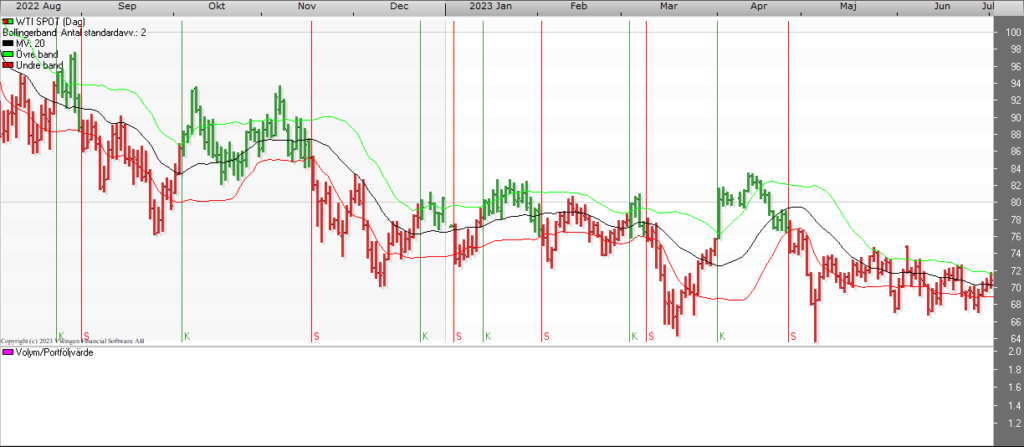The market for crude oil is larger than the 10 largest metals combined.
While the global economy depends on many commodities, none come close to the massive scale of the crude oil market. Besides being the primary source of energy for transportation, oil is an important raw material for many other industries such as plastics, fertilizers, cosmetics and medicine. As a result, the global market for crude oil, as measured by the physical oil market, is astronomical in size and has significant economic and geopolitical influence, with a few countries dominating global oil production.
The table below puts crude oil’s market size into perspective by comparing it to the ten largest metals markets combined. To calculate market sizes, we used the latest price multiplied by global production in 2022, based on data from TradingEconomics and the United States Geological Survey (USGS).
Note: This text focuses on raw and physical materials, excluding derivatives markets and alloy materials such as steel.
How big is the oil market?
In 2022, the world produced an average of 80.75 million barrels of oil per day (including condensate). This gives an annual crude oil production of around 29.5 billion barrels, with a market size exceeding $2 trillion at current prices.
This figure exceeds the combined size of the 10 largest metals markets.
| Raw material | 2022 annual production | Market size |
| Crude Oil | 29.5 billion fat | 2.1 trillion dollars |
| Iron ore | 2.6 billion tons | 283.4 billion dollars |
| Gold | 3,100 tons | 195.9 billion dollars |
| Copper | 22 million tons | 183.3 billion dollars |
| Aluminum | 69 million tons | 152.6 billion dollars |
| Nickel | 3.3 million tons | 68.8 billion dollars |
| Zinc | 13 million tons | 30.9 billion dollars |
| Silver | 26,000 tons | 19.9 billion dollars |
| Molybdenum | 250,000 tons | 12.9 billion dollars |
| palladium | 210 tons | 9.5 billion dollars |
| Lead | 4.5 million tons | 9.2 billion dollars |
Based on raw material prices as of July 7, 2023.
The combined market size of the 10 largest metals markets is $967 billion, less than half the size of the oil market. In fact, even if we added all the remaining smaller crude metal markets, the oil market would still be much larger.
This also reflects the huge scale of global oil consumption annually, with the resource having a ubiquitous presence in our daily lives.
The big picture
While the oil market towers over the metal markets, it is important to realize that this does not detract from the importance of these commodities.
Metals are an important building block of the global economy and play a key role in infrastructure, energy technologies, etc. Meanwhile, precious metals such as gold and silver act as important store of value.
As the world moves towards a more sustainable future and away from fossil fuels, it will be interesting to see how the markets for oil and other commodities develop.
 Source: Vikingen.se
Source: Vikingen.se
About the Viking
With Viking’s signals, you have a good chance of finding the winners and selling in time. There are many securities. With Viking’s autopilots, price data, tables and stock prices, you can sort out the most interesting ETFs, shares, options, warrants, funds, etc.
Click here to see what Vikingen offers: Detailed comparison – Stock market program for those who want to become even richer (vikingen.se)













